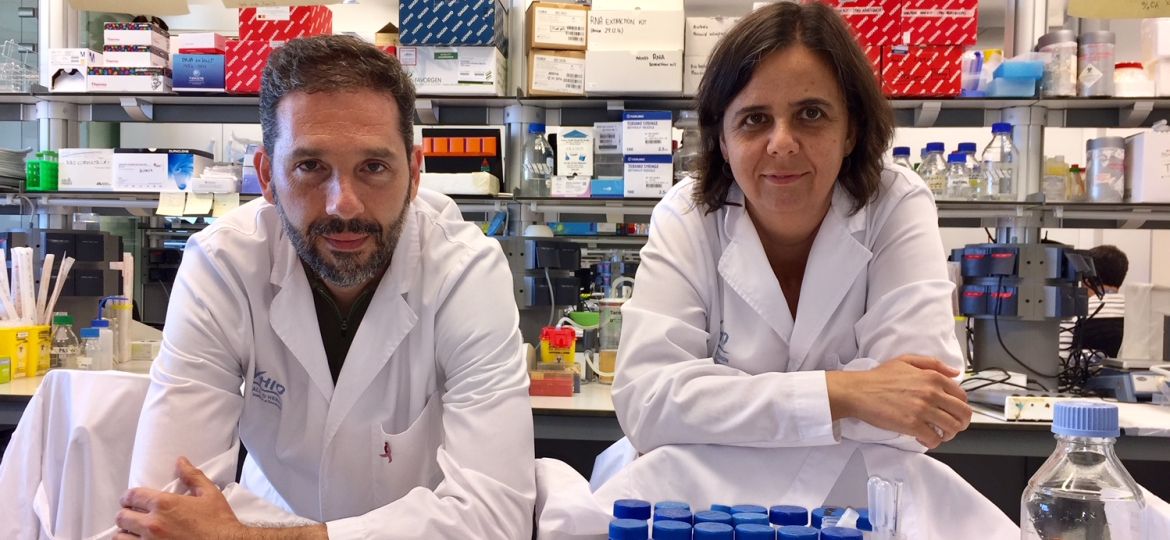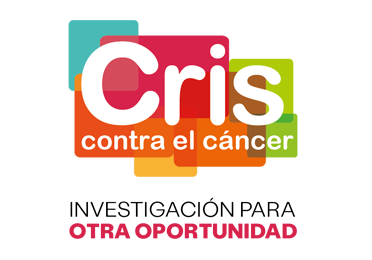
- Extracellular HMGA1 evidenced as a novel drug target for the treatment of metastatic triple-negative breast cancer (TBNC) and predictive biomarker of metastatic cell spread.
- For the first time VHIO researchers show that HMGA1 protein is secreted in invasive cells and drives tumor invasion and metastasis in TNBC.
- The shift in HMGA1’s subcellular localization is predictive of metastasis in this tumor type – one of the most aggressive of all breast cancers, for which there are limited targeted treatments available.
Describing an alternative extracellular function of the nuclear protein – high mobility group A1 (HMGA1) – in breast cancer and invasion, research led by Josep Villanueva, Principal Investigator of VHIO’s Tumor Biomarkers Group and first authored by Olga Méndez, Post-Doctoral Fellow of the same group, has just been published in Clinical Cancer Research*. While the link between tumor cell invasion and metastasis in patients with triple-negative breast cancer (TNBC) and HMGA1 has long since been established, this protein has not previously been exploited as a therapeutic target due to its known location in the nuclei of cells. Up until now.
Carried out in collaboration with colleagues at the Vall d´Hebron Institute of Research (VHIR), Vall d´Hebron University Hospital´s Pathology and Oncology Departments (Vall d´Hebron Barcelona Hospital Campus), the authors’ unmasking of HMGA1 moonlighting opens up new therapeutic opportunities for the treatment of TBNC. More specifically, by exposing an alternative extracellular function of this protein, the team have also evidenced HMGA1 as a predictor of metastases in these patients.
Investigators belonging to the virtual Center for the Biomedical Research Network in Oncology (CIBERONC), directed by Joaquín Arribas, Director of Preclinical Research at VHIO and ICREA Professor, also participated in this study.
Secrets found in cancer secretome
By studying the cancer cell secretome the investigators discovered that HMGA1 was unexpectedly located elsewhere. The secretome is a collection of proteins consisting of proteins secreted by cells into the extracellular space. These proteins can not only be used to send messages among cells but also carry out myriad functions. This latest VHIO discovery has demonstrated that a group of proteins –supposedly intracellular- are also secreted in cancer cells. Research suggests that a fraction of intracellular proteome could be playing unexpected roles in the extracellular space during tumorigenesis.
“One of our main objectives was to search for new therapeutic targets for triple-negative breast cancer and tumor invasion. By comparing the secretome of invasive and non-invasive cell lines, we discovered a group of proteins that shouldn’t have been there since they were not thought to be classically secreted,” explains Josep Villanueva, corresponding author of the present study.
Among these proteins the researchers found HGMA1 that has long since been linked to metastatic processes and cancer invasion but has not been considered a viable candidate for targeted drug development due to its location in the nuclei of cells. “HGMA1’s sister protein, HMGB1, is a marker of necrosis and is found in blood. It might well be that the entire HMG family is predisposed to inhabit various locations. This constitutes another possible area of research prompted by our latest findings,” observes Josep. He continues, “The secretion of supposed intracellular proteins could lead to new direction in the development of more effective anti-cancer therapies.”
This VHIO-led study will not only stimulate studies exploring new drugs targeting HMGA1, but has also shown that this protein can be used as a biomarker predicting metastasis. “We have described a correlation between HMGA1 secretion and its nuclear-to-cytoplasmic shift in subcellular localization. In so doing, we have successfully evidenced that this subcellular localization of HMGA1 in clinical samples predicts the incidence of metastasis in triple-negative breast cancer,” adds VHIO’s Olga Méndez, first author of the study.
Up until now HMGA1 had been described as a nuclear protein that acted as a co-transcription factor. This latest research shows that it is also secreted in a more specific manner. According to Olga, these newfound insights promise an additional route towards advancing targeted drug discovery and development, “Once occupying the extracellular space it becomes a ligand for a plasma membrane receptor. This elicits a specific signaling pathway triggering an increase in migration invasion and metastasis. In addition to deciphering its nuclear function we have also shown how HMGA1 is secreted in invasive tumor cells”.
Representing approximately 15% of breast cancer cases, triple-negative breast cancer is typically very aggressive and has a higher incidence of metastasis than other subtypes of breast cancer. Standard therapy for these patients is limited to generic adjuvant chemotherapy and radiotherapy and efforts aimed at identifying new tumor biomarkers and drug targets to treat this tumor type have had limited success. For this very reason, new methodological approaches could be essential in more effectively treating this disease.
Not only do these latest insights spurred by VHIO change the view on HMGA1’s role in tumorigenesis, they also support the relevance of unconventional protein secretion in cancer diagnostics and therapeutics – now and in the future.
For more information about this study please contact Amanda Wren, Director of Communications, Vall d’Hebron Institute of Oncology (VHIO) via email: awren@vhio.net.
###
Reference:
* Extracellular HMGA1 promotes tumor Invasion and Metastasis in Triple-Negative Breast Cancer. Olga Mendez, Vicente Peg, Candida Salvans, Mireia Pujals, Yolanda Fernandez, Ibane Abasolo, Jose Perez, Ana Matres, Marta Valeri, Josep Gregori, Laura Villarreal, Simo Schwartz, Santiago Ramon y Cajal, Josep Tabernero, Javier Cortes, Joaquin Arribas and Josep Villanueva. Clin Cancer Res. August 22 2018 DOI: 10.1158/1078-0432.CCR-18-0517
Acknowledgement:
This research was supported in part by the Susan G. Komen Foundation.











